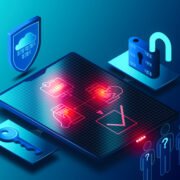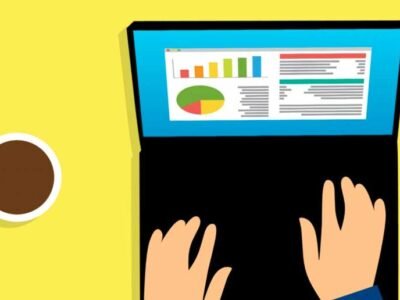Artificial intelligence (AI) is like a smart technology that can do things that usually only people can do. It can learn, think, and make decisions. AI helps make tasks easier, like looking at data, creating stuff, or helping customers. It does this by doing things automatically, making them better, or personalizing them for you.
But AI isn’t always the best choice for everything. It has some downsides and limits. So, it’s a good idea to use other options along with AI in your work. These alternatives can provide different solutions that go well with AI or help with its problems. This way, you get the best of both worlds—using AI’s strengths and avoiding its weaknesses.
Understanding AI Alternatives
AI alternatives are different ways to get things done without using AI. Instead, they use other technologies or methods to do similar or different tasks, aiming for similar or different goals in a process. There are many types and examples of these alternatives.
Non-AI solutions
Non-AI solutions are ways of doing things that don’t involve fancy technology like AI. Instead, they use regular methods like people’s intelligence, hard work, or judgment. This can give more control, flexibility, creativity, innovation, and uphold values in a process. There are many examples of these non-AI solutions.
Human analysis:
Human analysis means people using their smarts, like thinking logically, trusting their gut feelings, or relying on their experience. They gather and make sense of data to come up with new knowledge, ideas, or decisions in a process. Human analysis adds more depth, meaning, and diversity to the workflow compared to AI analysis, which uses computer tricks to do similar things.
Human creation:
Human creation is when people use their skills, like writing, filming, or editing, to make or change things like products or services. They do this to improve the quality, appearance, message, or purpose of what they’re working on. Human creation brings more originality, emotion, and authority to the process compared to AI creation, which uses computer techniques to do similar things.
Human service:
Human service is when people use their judgment, like talking, getting feedback, or making evaluations, to connect with customers or users of a product or service. They do this to make customers happier, more involved, or trusting in what they offer. Human service adds more personal touch, understanding, and ethical values to the process compared to AI service, which uses computer techniques to interact with customers.
Non-AI tools
Non-AI tools are tools that use different ways to get things done. They don’t use advanced technology like AI but rely on other methods or techniques. These tools do tasks that complement or work together with AI, achieving different goals in a process. There are many types and examples of these non-AI tools.
Non-AI software:
Non-AI software is computer programs that use regular programming languages like Python, Java, or C++. They do different tasks like handling data, creating content, or making things work better. Non-AI software is known for being stable, easy to use, and secure in a workflow. This is different from AI software, which uses fancy techniques like data mining or natural language processing for similar tasks.
Non-AI hardware:
Non-AI hardware refers to regular devices like computers, smartphones, or tablets. These devices handle tasks such as storing data, delivering content, or consuming content. Non-AI hardware is known for being accessible, affordable, familiar, and reliable in a workflow. This is different from AI hardware, which might use special devices like headsets, glasses, or watches for similar tasks.
Non-AI techniques:
Non-AI techniques are ways of doing things that rely on regular methods or skills like brainstorming, storytelling, or design thinking. These techniques are used for tasks like analyzing data, creating content, or making content better. Non-AI techniques bring more creativity, emotion, empathy, and ethical values to a workflow. This is different from AI techniques, which use advanced methods like data mining or computer vision for similar tasks.
Advantages of Diversifying Workflow
Diversifying a workflow means using different kinds of solutions, like AI, non-AI, or other tools that work together. They do different tasks or achieve different goals in the workflow. Diversifying a workflow has many advantages.
Increased flexibility and adaptability:
Diversifying a workflow makes it more flexible and adaptable. Users can pick or switch between different solutions that fit their preferences, needs, or the workflow’s requirements. It also helps users cope with different situations or challenges, making the workflow better in quality and performance.
Increased diversity and inclusivity:
Diversifying a workflow also makes it more diverse and inclusive. Users can use different solutions that represent various cultures, languages, or backgrounds. It lets them explore different aspects of themselves, like gender, race, or age. Diversifying the workflow also helps users connect with others who use or create different solutions, learn from them, and collaborate in different areas.
DeepBrain’s Moral AI Alternative
DeepBrain is a top AI platform that makes amazing videos using advanced AI techniques. It goes beyond just regular AI. DeepBrain uses cool tech like talking, seeing, and learning to create videos that can talk back to you through text, voice, or video. You can even customize these videos to tell your own story.
It’s not just about making cool pictures or videos. DeepBrain is a place where you can share your stories, ideas, or messages. It’s all about showing your creativity, innovation, and the values important to you and society. DeepBrain is all about using AI videos responsibly and ethically. They want to protect the rights of creators, subjects, and users of AI videos. They also want people to be aware of AI video potential and risks, and to check if the videos are real and credible.
Conclusion
AI is a smart technology that can do things like learning, reasoning, and decision-making—tasks usually done by people. It’s great for making tasks like data analysis, content creation, or customer service easier and more efficient.
However, AI isn’t always the perfect solution. It has limits and issues, like depending too much on it or having biases. That’s why it’s smart to also use AI alternatives in your work. These are different ways, like regular tools or methods, that can solve problems AI might struggle with. This makes your work better by overcoming AI challenges and adding more benefits.
AI alternatives can be different types, like non-AI solutions or tools. They do various things in a workflow, such as handling data or creating content. Using AI alternatives can make your workflow more flexible, adaptable, diverse, and inclusive.












